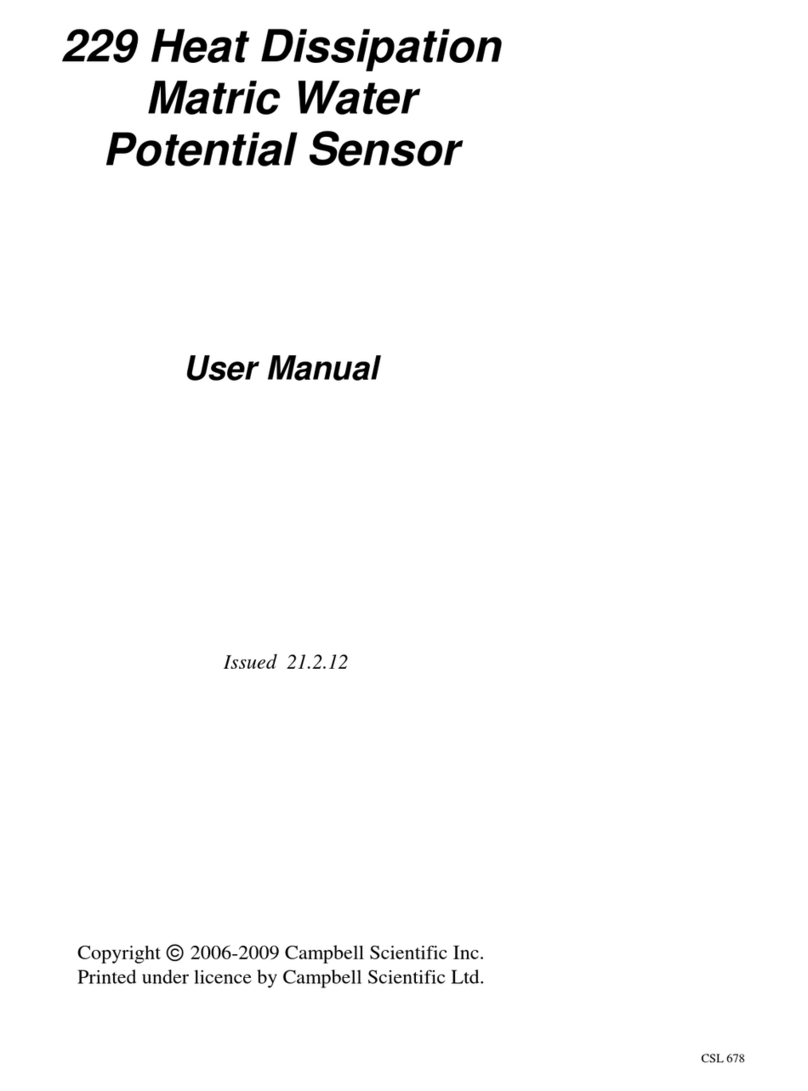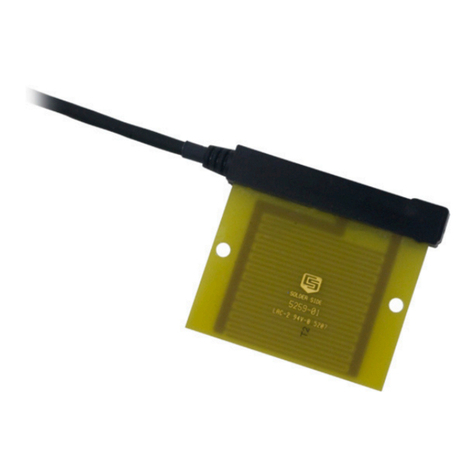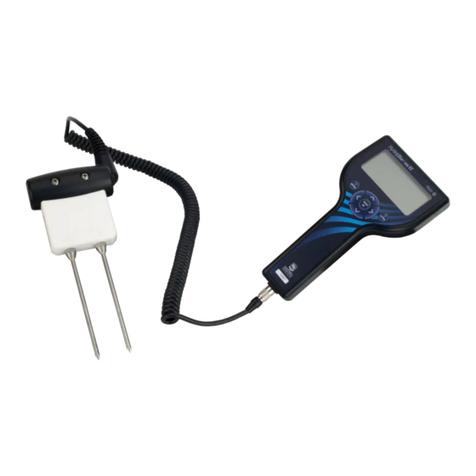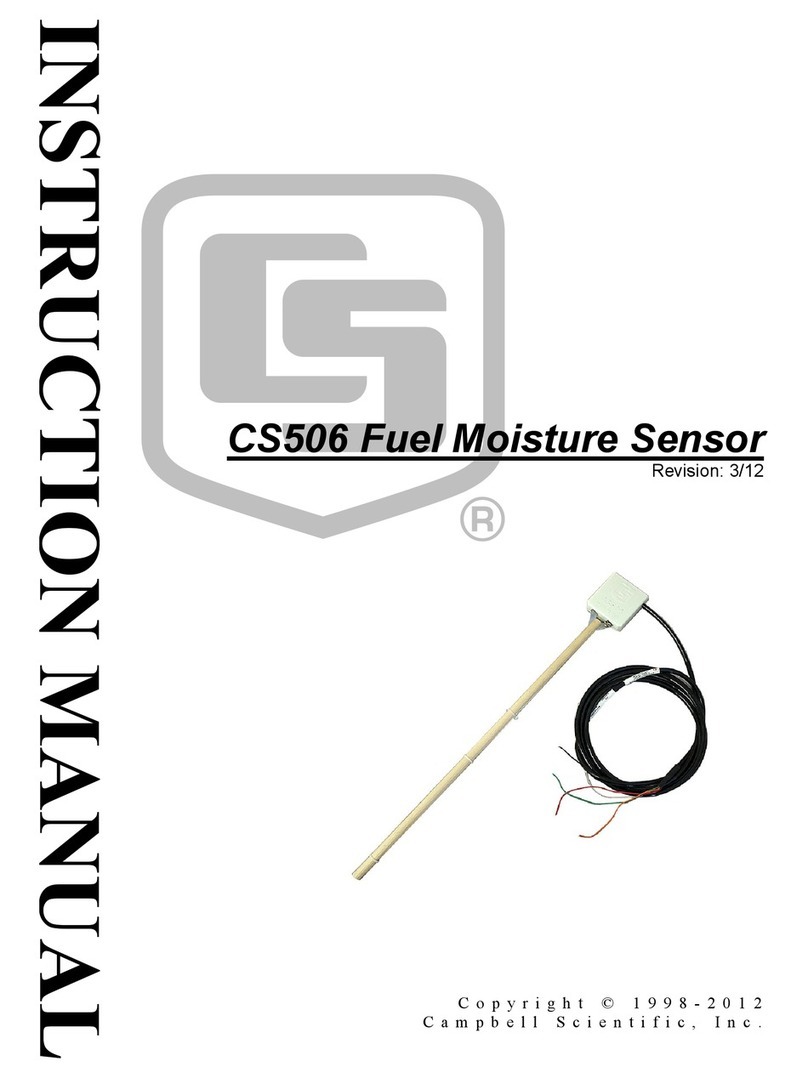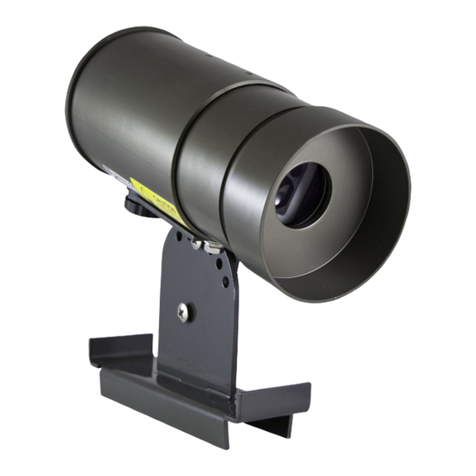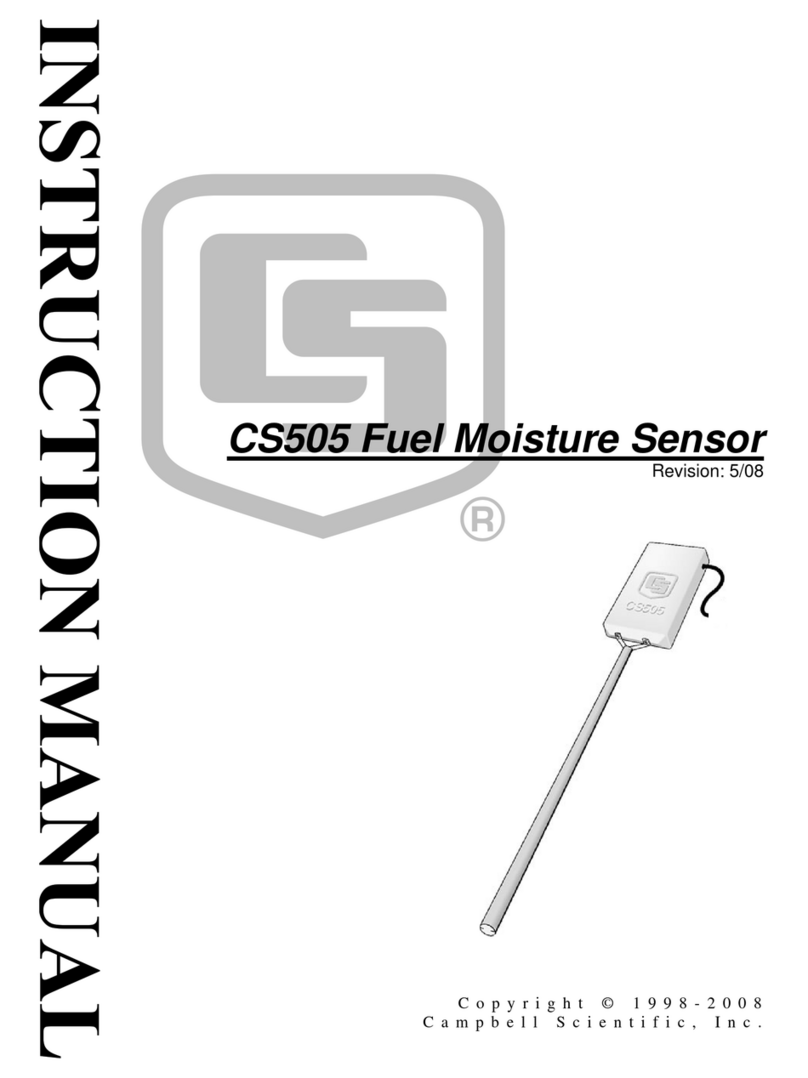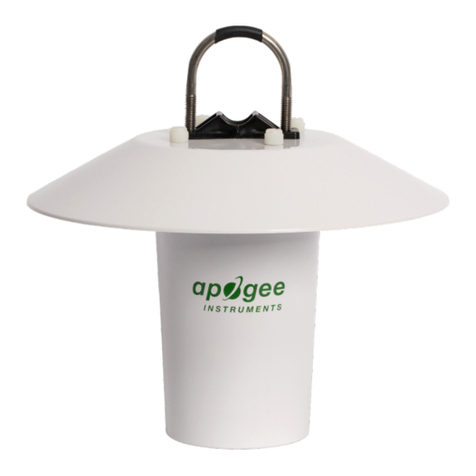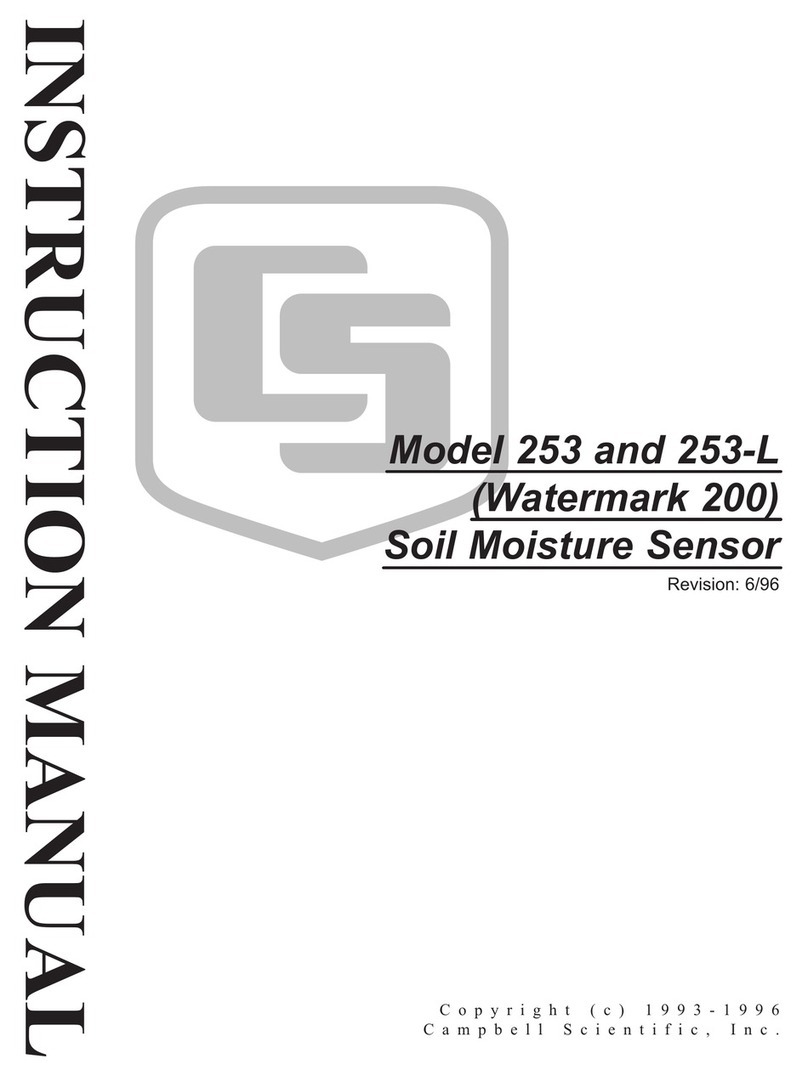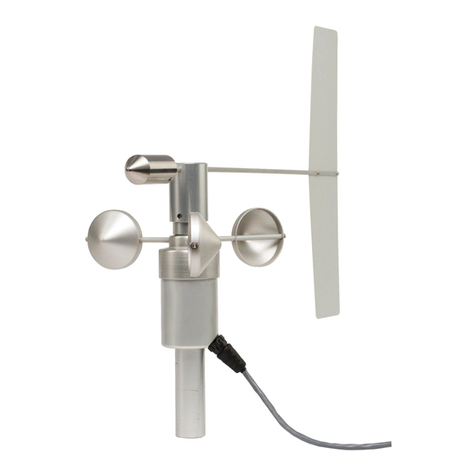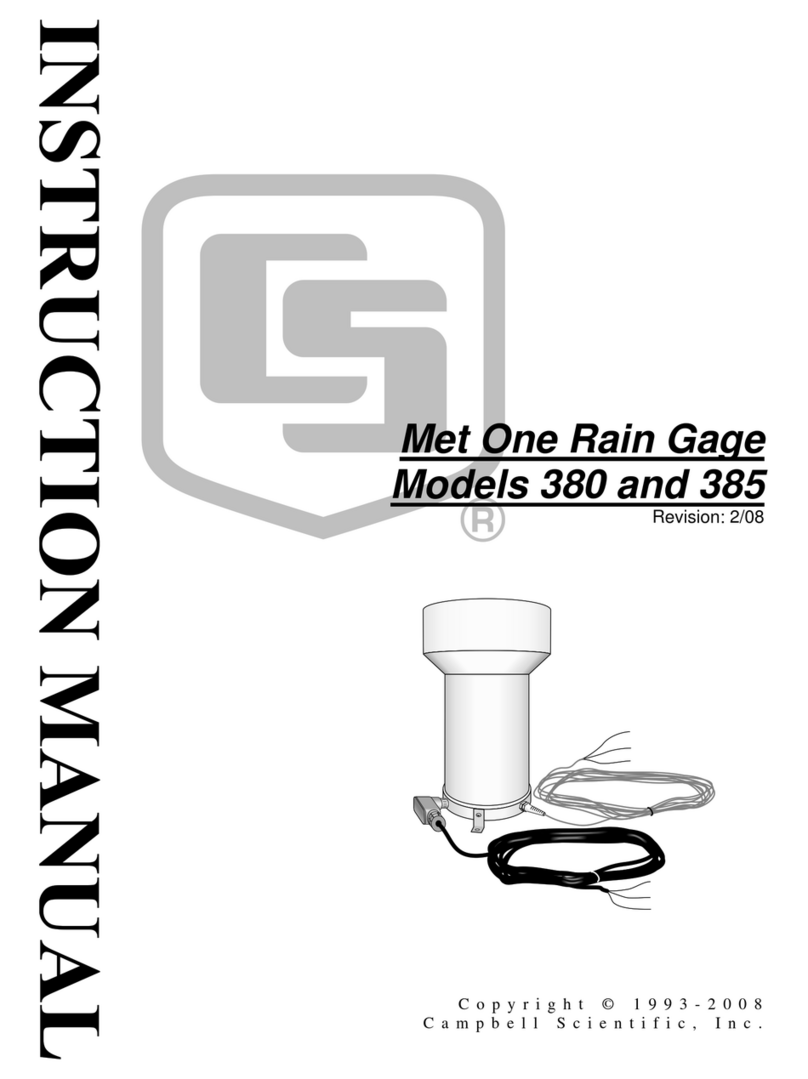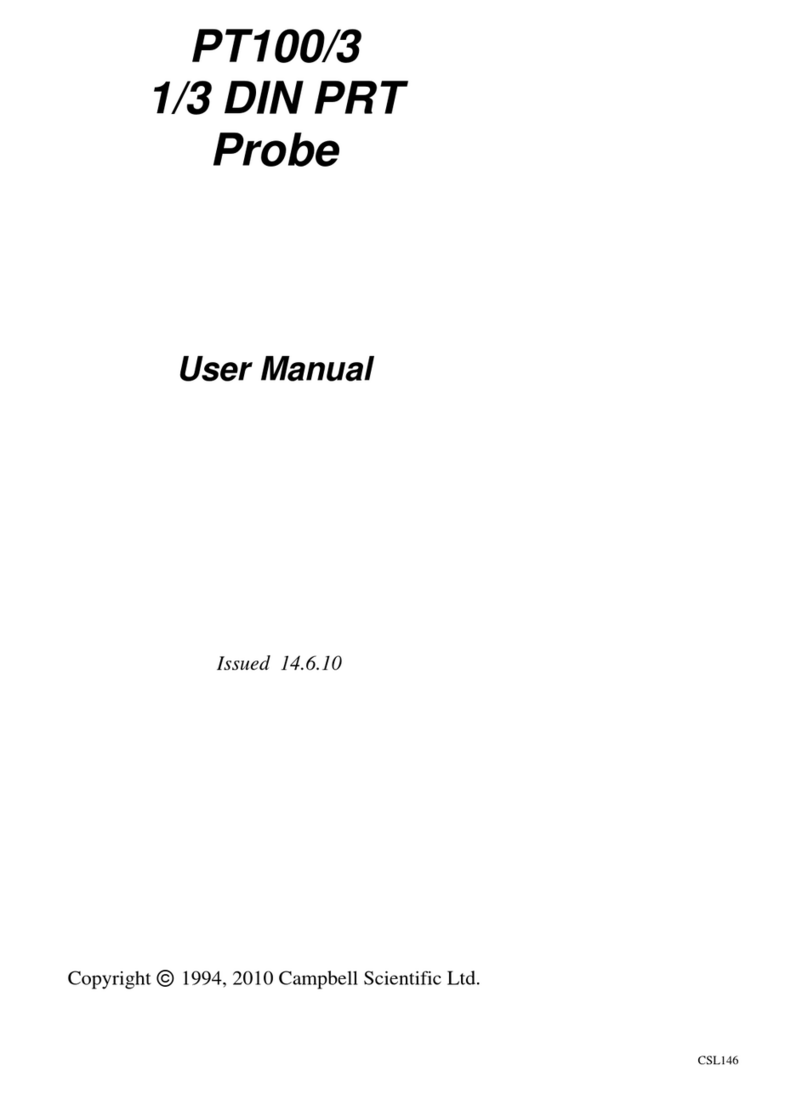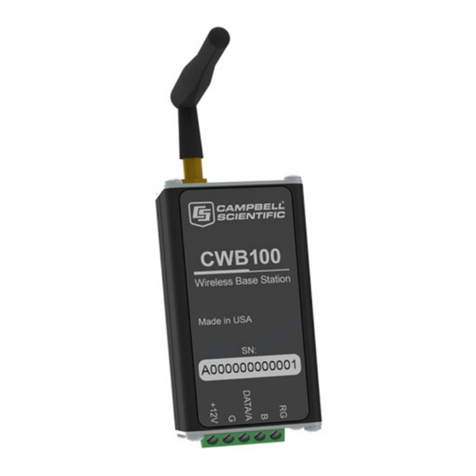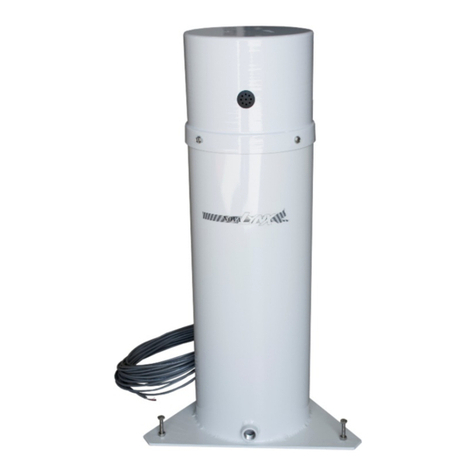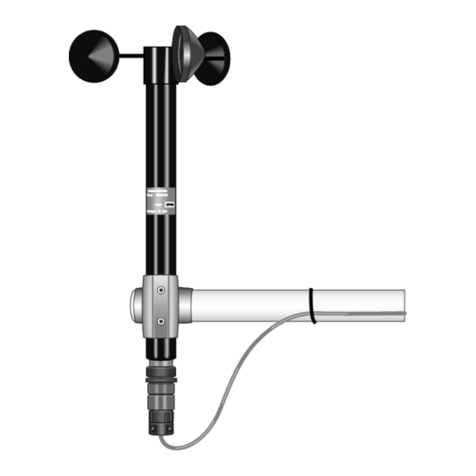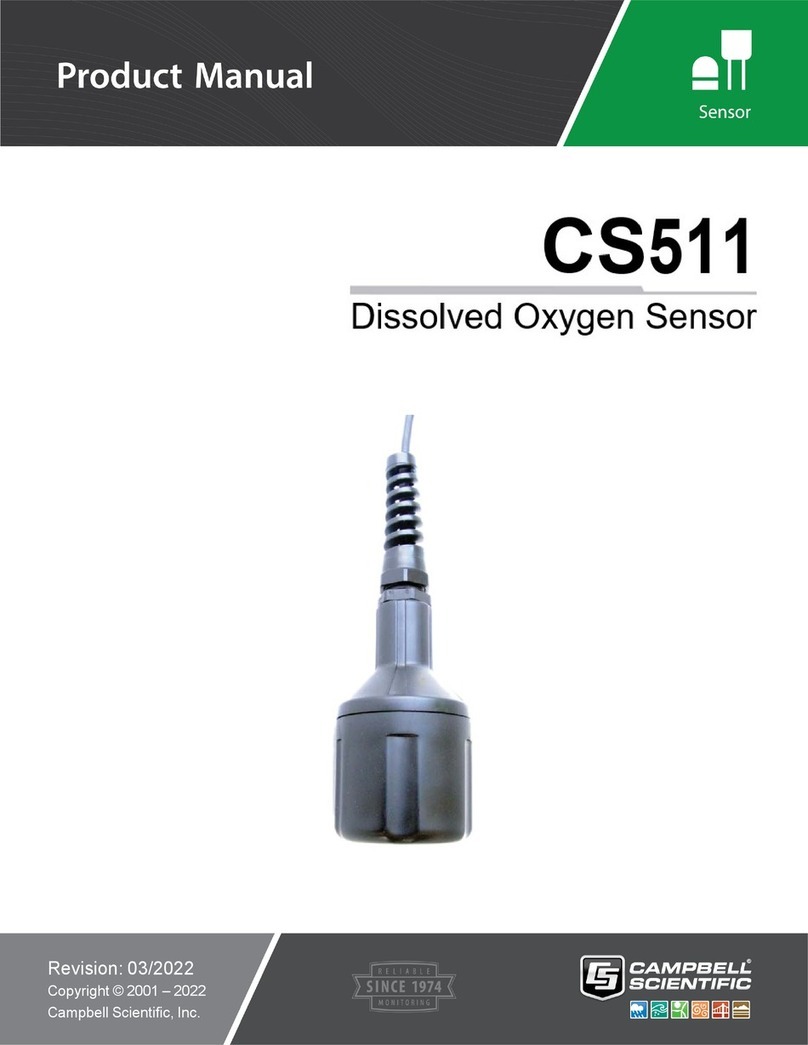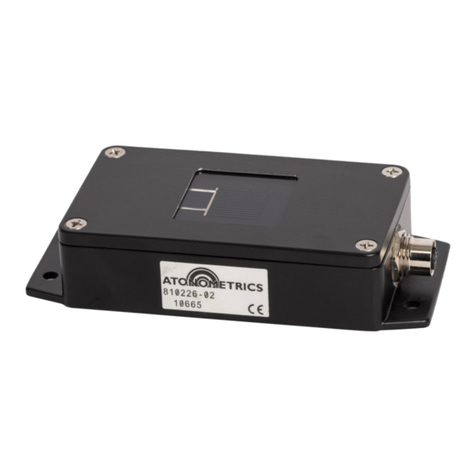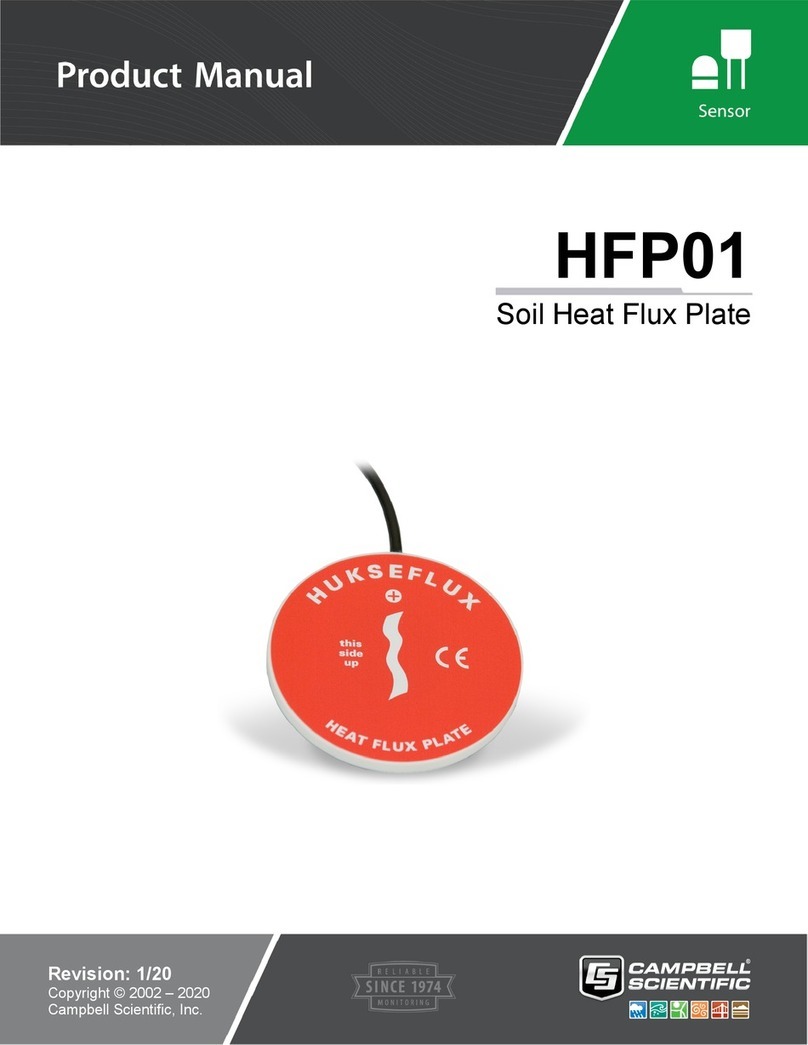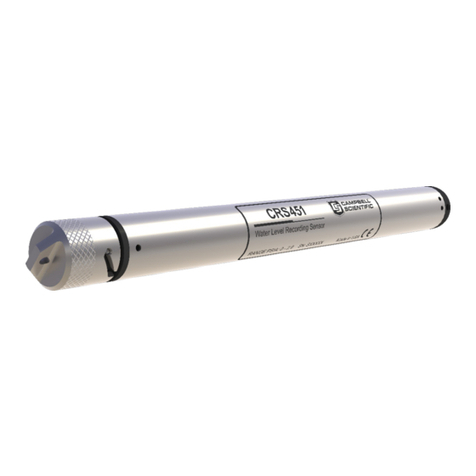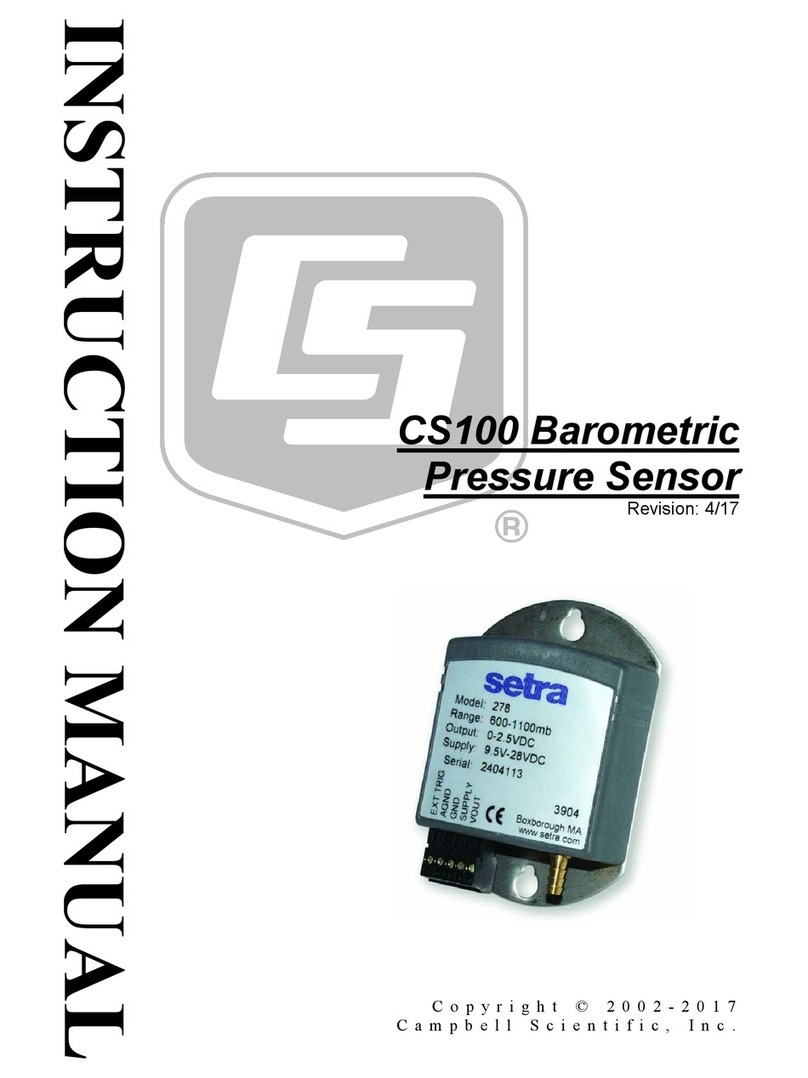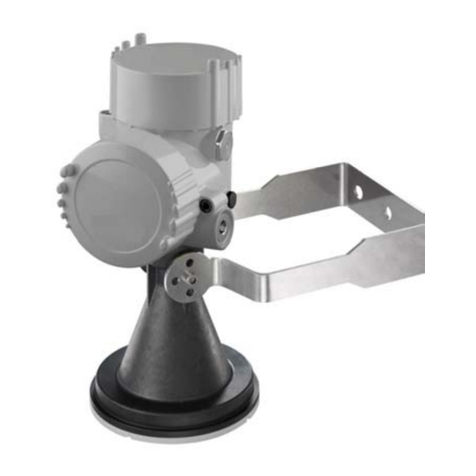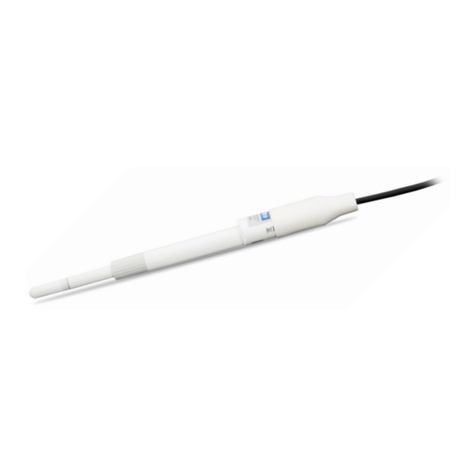
1
CS505 FUEL MOISTURE SENSOR
1. GENERAL DESCRIPTION
The CS505 Fuel Moisture Sensor provides an
automated measurement of the moisture
content of a standard 10-hour fuel moisture
dowel. The moisture content of the 10-hour fuel
sensor represents the moisture content of
small-diameter (10-hour time lag) forest fuels.
Traditionally, the standard fuel moisture stick
consists of a rack of four 1/2 inch diameter
ponderosa pine dowels. The resulting rack is
about 20 inches long with an oven-dry weight of
100 grams. The characteristic time constant of
the rack is 10 hours. The rack is mounted 12
inches or about 30 centimeters above the forest
floor. The rack is left outside continually
exposed to the same conditions as forest fuels.
The rack absorbs and desorbs moisture from
its surroundings. As the rack transfers
moisture, its weight changes. Periodic weighing
of the rack determines changes in moisture
content provides an indication of moisture
changes in forest fuels.
The CS505 sensor incorporates the same
carefully selected USFS standard ponderosa
dowels as the traditional weighing fuel moisture
racks. No artificial materials (e.g., epoxy
sealant) are added to the dowel that would
adversely influence the natural behavior
characteristics of the dowel. Because the
complete dowel surface is accessible for
moisture exchange, the response of the CS505
is similar to that of the traditional weighing
racks. To optimize probe-to-probe repeatability
and to allow probe interchangeability without
individual calibration, two additional sorts are
performed on the dowels before they are
selected to be used as a sensor. First, the
dowels are sorted dry by density to improve
accuracy in the dry range of 0 to 15%. Second,
the dowels are sorted after a 50-minute soak by
weight to reduce probe-to-probe time response
variation and minimize variability in the wet
range of 20 to 50%.
Even after careful selection and sorting is
performed to choose the most representative
dowels, the majority of measurement error is
due to the variability of wood. Wood’s ability to
transfer moisture is dependent on many
variables, primarily cell structure and wood
resin content. These variables change over
time and after repeated wetting and drying
cycles. Only a small amount of overall
measurement error is due to the electronic
circuitry.
2. SPECIFICATIONS
The fuel moisture sensor consists of two
stainless steel strips pressed into groves in a
standard 1/2 inch ponderosa pine dowel and
secured with nylon tie wraps. The probe
connects to the electronics with two Phillips
head screws. A shielded four-conductor cable
is connected to the circuit board to supply
power, enable the electronics, and monitor the
signal output. The printed circuit board is
encapsulated in a water proof epoxy housing.
High speed electronic components on the
circuit board are configured to oscillate when
power is applied. The output of the circuit is
connected to the fuel moisture probe which acts
as a wave guide. The oscillation frequency and
therefore output signal of the circuit is
dependent on the dielectric constant of the
media surrounding the stainless steel strips.
The dielectric constant is predominantly
dependent on the water content of the wood.
Digital circuitry scales the oscillation frequency
to an appropriate range for measurement with
a datalogger. The CS505 output is essentially a
square wave with an amplitude of ±2.5 VDC.
The frequency of the square wave output
ranges from approximately 600 to 1500 Hz.
*Fuel moisture accuracy:
(with a new stick)
90% of all
range measurements rms error
0 to 10% ±2% ±1.0%
10 to 20% ±3% ±1.5%
20 to 30% ±5% ±2.2%
30 to 50% ±6% ±2.4%
Range: 0-50%
Power Supply: 9 VDC minimum to
18 VDC maximum
Enable voltage: off at 0 V (<1 VDC)
on at 5 V (>1.5 VDC maximum
12 VDC)
